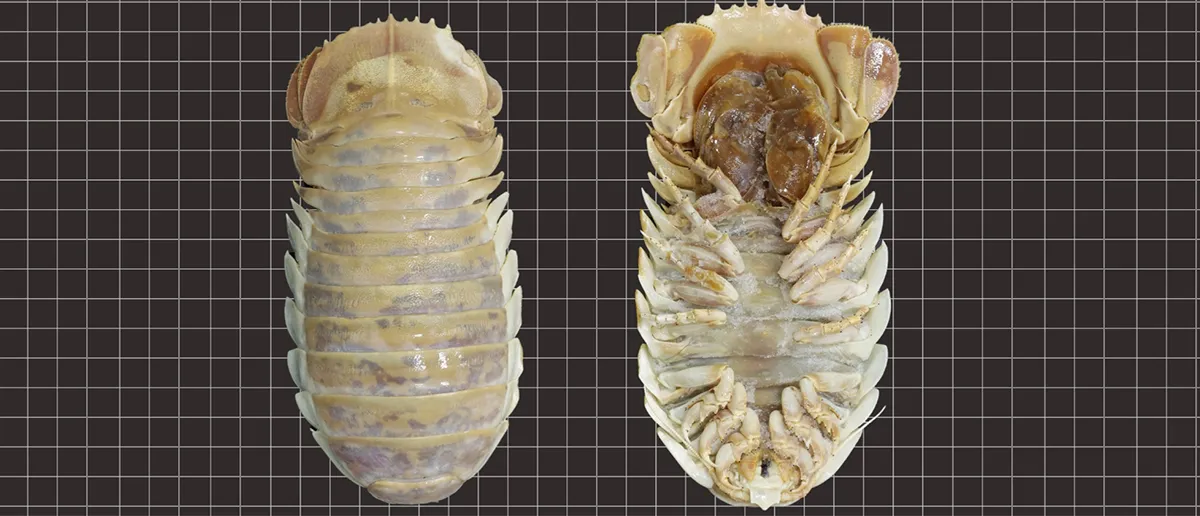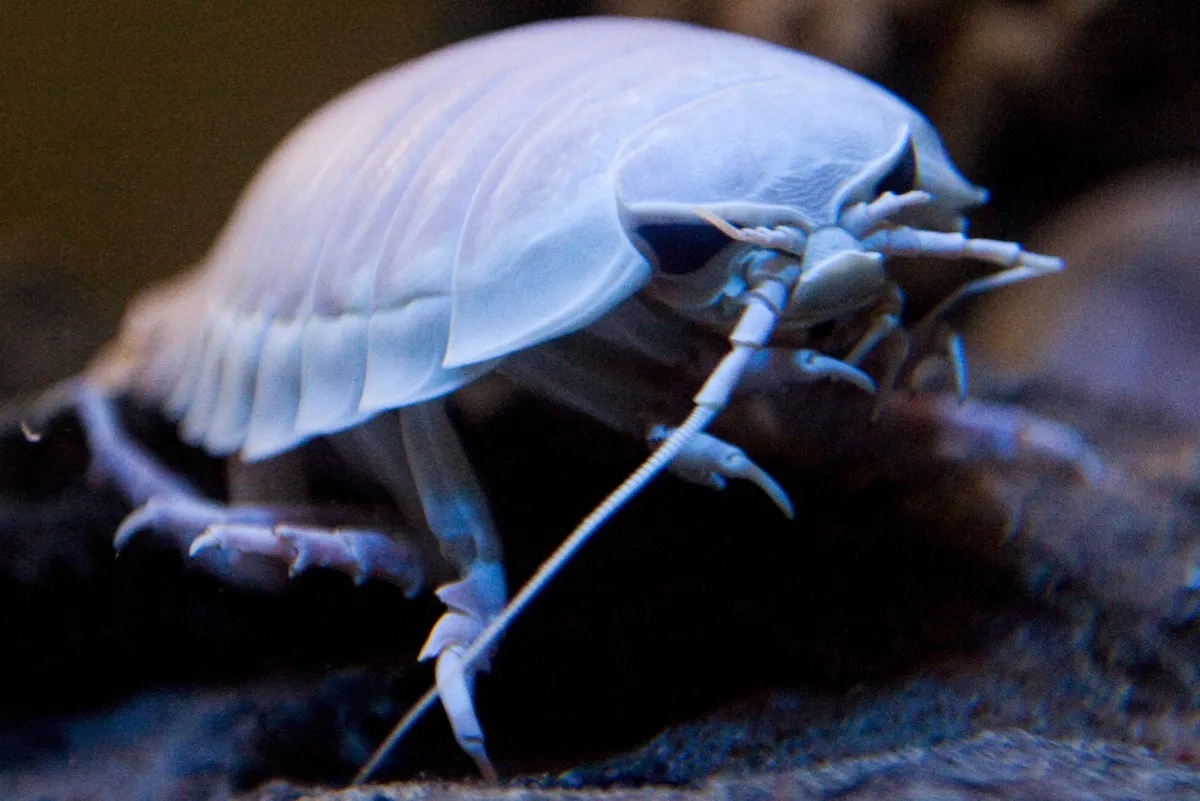No, it’s not a facehugger from Alien, it’s a new species of deep-sea isopod that has been discovered in the Gulf of Mexico by a group of Taiwanese, Japanese and Australian researchers.
Isopods, with their segmented bodies and seven pairs of limbs, are an order of crustaceans that includes woodlice and their relatives. Isopods vary hugely in size, from tiny species measuring less than a millimetre, to the huge individuals lurking in the deep ocean.
At about 26 centimetres in length, this new species of giant isopod is around 2,500 per cent bigger than a woodlouse. But don’t worry, just like the little invertebrates that live under rocks and leaves in your garden, these deep-sea animals are completely harmless.
It was originally thought to be a type of Bathynomus giganteus, which is one of the largest of the deep-sea isopods, but on closer inspection was found to have a number of unique features. The scientists have named the new species Bathynomus yucatanensis. The name is taken from the Yucatán Peninsula in Mexico, which is the closest landmass to where the individual was found.

“Compared to B. giganteus, B. yucatanensis has more slender body proportions and is shorter in total length … and the pereopods [thoracic limbs] are more slender,” the researchers said.
The creamy yellow colour of its exoskeleton further distinguished this new deep-sea isopod from its relatives, which are greyish in colour.
There are around 20 species of Bathynomus isopods, which live at the bottom of the ocean. This latest specimen was collected from a baited trap that had been placed at a depth of 600 to 800 metres in 2017. Since then, it has been held at the Enoshima Aquarium in Japan, and was assumed to be an individual of B. giganteus, until this latest research was carried out.

To make sure that they really were different species, the scientists conducted a genetic analysis that compared the two animals.
“Due to the different sequences of the two genes – COI and 16S rRNA – coupled with differences in morphology, we identified it as a new species,” they said.
The enormous size of the isopods is due to a phenomenon called ‘deep-sea gigantism’, where animals inhabiting the deep ocean end up much larger than their relatives closer to the surface. Giant squid and Japanese spider crabs are other examples of deep-sea gigantism.
The scientists caution that there has been a history of the giant isopods being misidentified, ever since they were first discovered more than 100 years ago. They say that it is important that we know more about them for conservation reasons.
“Some species of Bathynomus with commercial potential have become the targets of deep-sea trawl fisheries,” the researchers said. “For the management of Bathynomus fisheries, it is important to know precisely which species are being caught.”
Crunchy king prawn, anyone?
